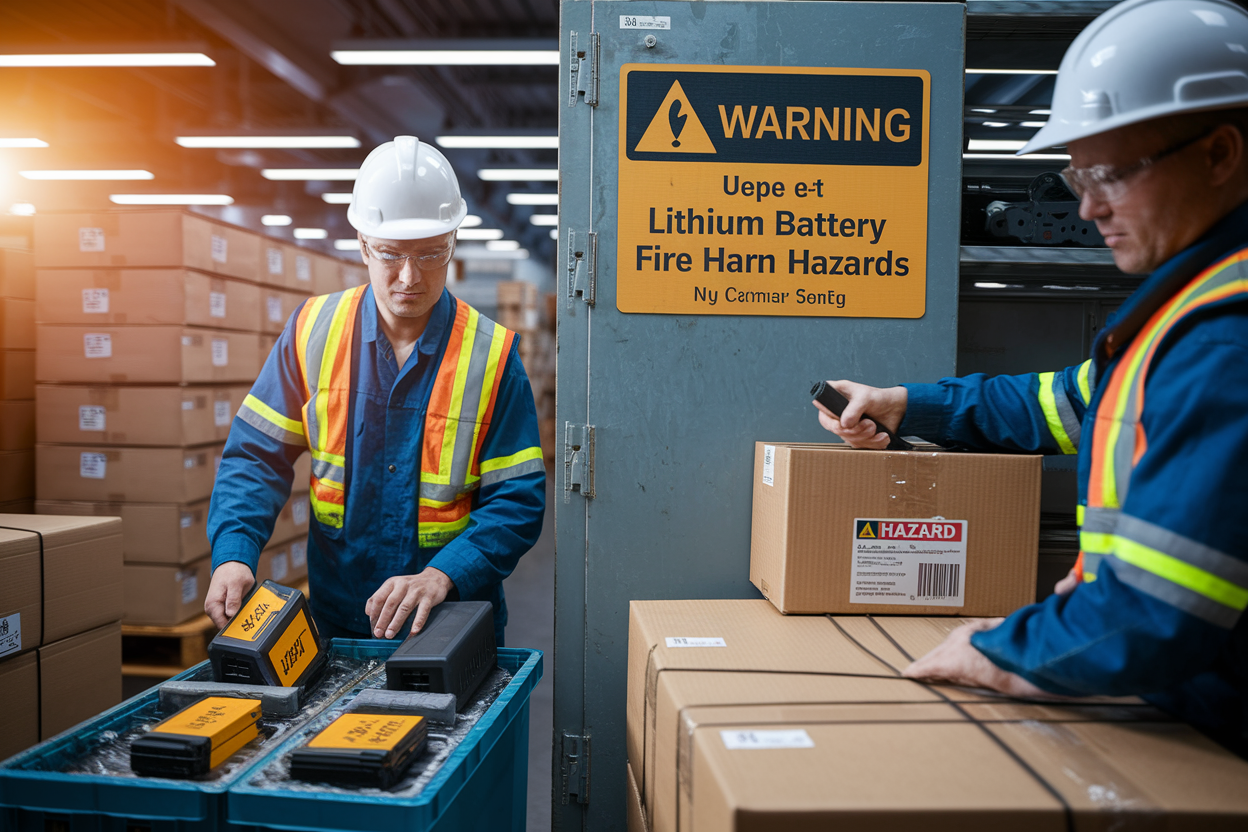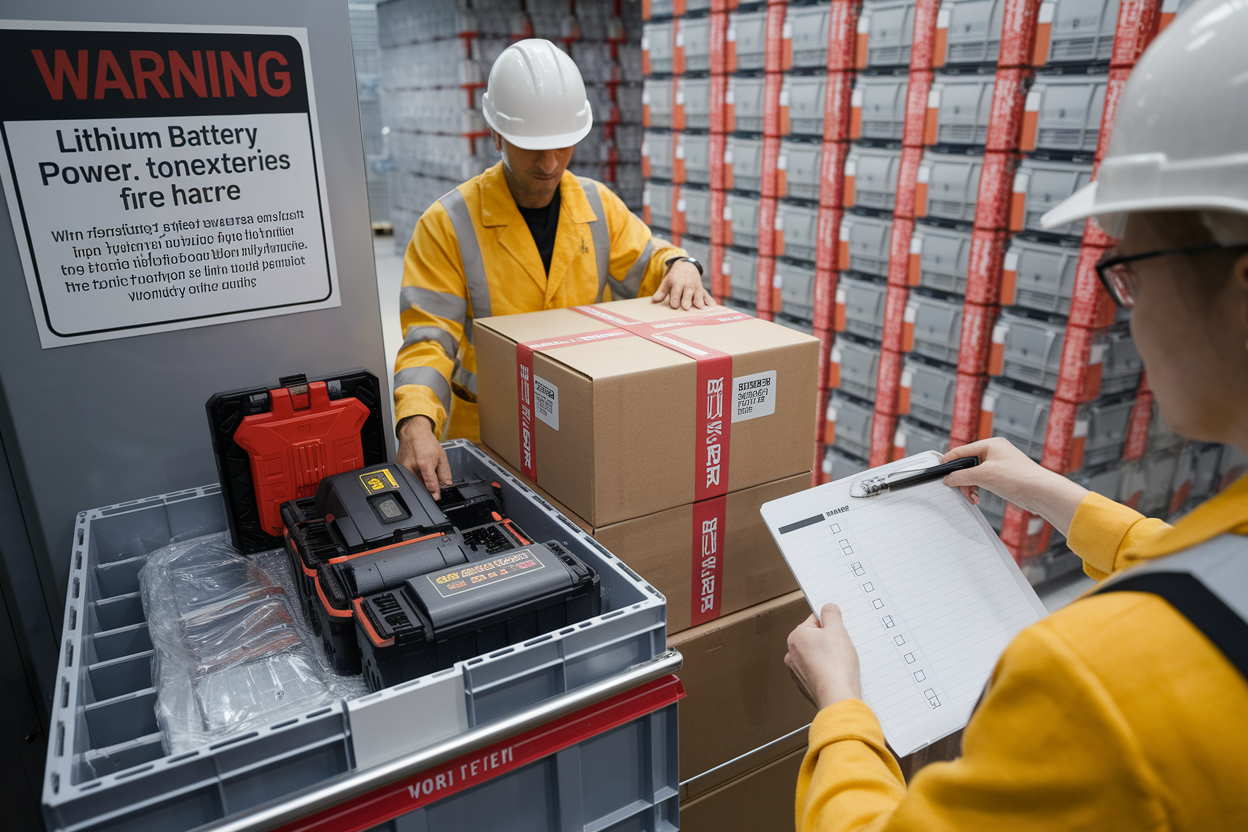
Shipping power tools1 and lithium batteries2 internationally isn't as simple as throwing them in a box and hoping for the best. Without proper packaging, shipments can be delayed, damaged, or even rejected at customs. Getting it right from the start ensures smooth delivery and keeps your business running efficiently.
Packaging standards for tools and lithium batteries are crucial to ensure compliance with international shipping regulations, prevent transit damage, and avoid legal issues. Proper packaging includes durable containers, protective cushioning, and clear labeling to meet safety and customs requirements.
Ignoring packaging regulations3 can be a costly mistake. It could mean product damage, customs fines4, or even blacklisting by shipping carriers. Understanding and following international packaging standards is essential for smooth logistics and successful deliveries.
Why Are Packaging Standards for Tools and Lithium Batteries Important?
Packaging regulations exist to prevent accidents, ensure product safety, and comply with international laws. Mishandled shipments, especially lithium batteries, can lead to fire hazards or hazardous material violations.
Tools and lithium batteries require strict packaging standards to prevent damage, meet customs regulations, and ensure safe transport. Lithium batteries, in particular, pose fire risks if improperly packed, requiring specific UN-certified packaging and labeling.

When shipping internationally, different countries have different regulations. For example:
- The EU enforces CE compliance for power tools.
- The US follows DOT (Department of Transportation) regulations.
- Lithium batteries must comply with UN 38.3 testing and IATA shipping standards.
Failure to meet these standards can result in delayed shipments, fines, or rejected cargo. Understanding these regulations ensures your shipments arrive safely and legally.
How to Package Power Tools for International Shipping
Power tools are heavy, often fragile, and need strong protective packaging to withstand rough handling during transit.
For international shipping, power tools should be packed in durable boxes with shock-absorbing materials like foam or molded inserts. Using double-walled cartons, securing parts separately, and sealing with industrial-grade tape prevents damage and ensures safe transport.
Beyond protection, here’s what you should consider:
- Use sturdy, double-layered corrugated boxes.
- Wrap individual parts to prevent movement.
- Add cushioning like foam inserts or bubble wrap.
- Ensure strong seals using reinforced packing tape.
- Check destination country requirements for labeling and weight limits.
For high-value tools, consider using custom-molded foam packaging. It provides a snug fit and absorbs impact, reducing the risk of damage during transit.
How to Package Lithium Batteries for International Shipping
Lithium batteries pose higher risks due to their chemical composition and potential for overheating.
Lithium batteries must be packed in UN-certified boxes, insulated from metal objects, and enclosed in anti-static bags. Labeling should follow IATA Dangerous Goods Regulations, with proper documentation for customs clearance.
Common mistakes to avoid:
- Using non-UN-certified boxes.
- Mixing batteries with metal tools, which can cause short circuits.
- Neglecting to include required safety labels.
For bulk shipments, separating each battery in individual packaging prevents contact, which could lead to sparks or overheating. Additionally, some airlines have stricter regulations, so always verify airline policies before shipping.
Labeling and Documentation for International Shipments
Even if your packaging is perfect, missing documentation can halt shipments at customs.
Proper labeling and documentation for international shipments include hazard labels, compliance certificates (e.g., UN 38.3 for lithium batteries), and detailed packing lists. Customs forms and waybills must also be correctly filled out.
Key documents include:
- MSDS (Material Safety Data Sheet) for batteries.
- UN certification for lithium battery compliance.
- Customs declaration forms.
- Packing list with accurate product descriptions.
For lithium batteries, IATA requires a Dangerous Goods Declaration if the battery exceeds certain watt-hour limits. Failing to provide the right documentation can result in delays or fines.
Best Practices for Safe & Compliant International Shipping
Shipping internationally involves multiple checkpoints, from customs to airline inspections. Following best practices minimizes risks and ensures smooth transit.
For safe and compliant shipping, always use proper cushioning, UN-certified boxes for batteries, and follow international shipping regulations. Working with reliable carriers experienced in dangerous goods can prevent customs delays.
Additional best practices:
- Work with experienced freight forwarders who specialize in battery shipping.
- Ensure all staff handling packaging are trained on international shipping laws.
- Always check for updates in lithium battery shipping regulations.
By investing in high-quality packaging and following regulations, you reduce the risk of shipment delays, fines, and damaged goods.
Conclusion
Proper packaging5 isn’t just about protecting products—it’s about compliance, safety, and avoiding unnecessary headaches. Whether you’re shipping power tools or lithium batteries, following international standards ensures smooth delivery and a hassle-free experience. Make packaging a priority, and you’ll save time, money, and effort in the long run.
-
This link provides guidelines on shipping lithium batteries safely and legally to avoid delays or rejections at customs. ↩
-
Understanding international shipping rules for power tools helps ensure compliance and prevents unexpected delays. ↩
-
This link provides essential guidelines on international packaging standards to prevent fines, damages, or shipment rejections. ↩
-
Learn about the potential consequences, such as fines or carrier blacklisting, when failing to follow shipping regulations. ↩
-
from this link you will learn how the freight agent work for their customers ↩







